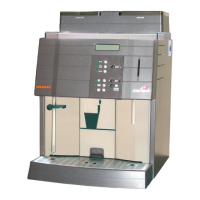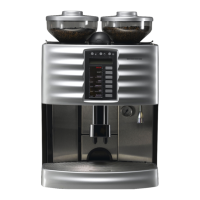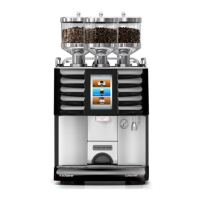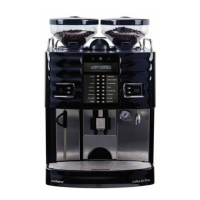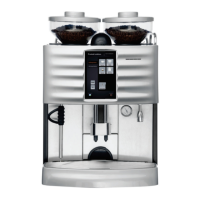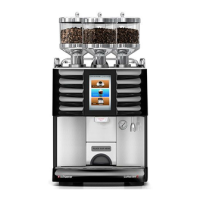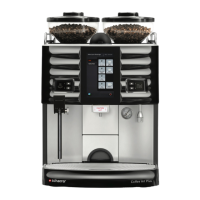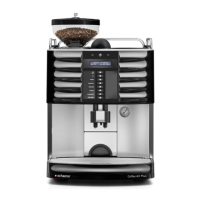Chapter 4 Fault diagnosis
SMSO-2-02.04- 15.07.03 89
4 Fault diagnosis
4.1 General notes
4.1.1 How this section is structured
This section is designed and categorised in the form of a ref-
erence work. It is divided into sections relating to the functions
of the machine in accordance with the structure of the ma-
chine and the system.
Control system / interactive programming
Brewing system
Hot water system
Steam system
Refrigerator unit (milk / milk foam)
At the beginning of each section is a fold-out figure containing
a drawing that illustrates the principles of the system that
follows. It also includes items such as the filters, baffles, noz-
zles, etc. This drawing can be used to quickly locate the com-
ponents listed in the tables. You can follow the route taken by
the water and how the product is produced inside the ma-
chine, and you can also see in the clearly arranged illustration,
how the components interact with one another. This simplifies
the task of locating faults .
4.1.2 Causes of malfunction
In addition to the illustrations of the main components of each
system, we also summarise some of the most frequent causes
of malfunction. Chains of several causes of malfunction are
not listed either in these, or in the actual fault lists. All service
technicians must be aware that a number of faults in one sys-
tem, which may be completely independent of one another,
may cause a malfunction of the complete system.
4.1.3 Overview of faults
At the beginning of every section is a tabular illustration con-
taining pictograms. Each of these pictograms indicates the
content of one of the fault lists that follow in the form of sym-
bols. This gives you a direct line to the table you are looking
for. This overview is categorised into different categories of
sensory categories (inter-sensory, visual etc.).
How to access the fault lists
1 Summary sheet
2 Fault lists – selection table (arranged by general sensory
perception or by sight, hearing or smell/taste)
3 Turn to the relevant fault list as indicated by the picto-
gram.
4 Search for the source of the fault in the fault list.
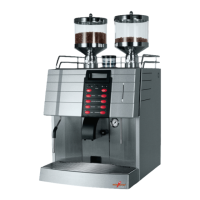
